The 2nd Annual MHFP Symposium
The Burdens of Congenital Central Nervous System Anomalies
Synopsis
The 2nd Annual Margaret Hackett Family Program (MHFP) Symposium introduced a variety of central nervous system congenital anomalies and the challenges of their treatments. Specific congenital syndromes and their burdens were discussed in detail to describe treatment approaches. In addition, models of care as well as future approaches were investigated.
At the conclusion of the event, participants had learned how to:
- Discuss the complexities of living with a central nervous system congenital anomaly;
- List the various tools used to diagnose and treat specific congenital anomalies of the central nervous system;
- Identify congenital anomalies of the central nervous system that remain difficult to treat;
- Describe current research approaches to several common congenital anomalies of the central nervous system.
Participants
This webinar event was designed for neurosurgeons, neurologists, pediatricians, physical medicine and rehabilitation physicians, nurses, physical and occupational therapists, and other healthcare professionals dedicated to the treatment of central nervous system congenital anomalies.
A variety of facilities were represented by participants of the webinar, such as the University of Chicago, University of Illinois at Chicago (UIC), Cedars-Sinai Medical Center/UCLA, Advocate Lutheran General Hospital, La Rabida Children’s Hospital, Pepperdine University, and University of Akron. The webinar event had also been received by international participants from Indonesia, Ecuador, and Bulgaria.
Speakers
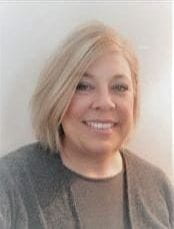
“How do Non-Profits Advocate for Children with Rare Neurological Disorders and their Families?”
Judith Holleman, APN
As a Pediatric Neurosurgery Nurse Practitioner at the University of Chicago, Judith Holleman discussed how non-profit organizations advocate for families. She shared her story about meeting Margaret Hackett, and bears witness to the obstacles Margaret and her family faced. She also reviewed how organizations advocate for families with research, education, and support. Three examples of non-profit organizations and the importance of being an advocate to patients and the role they play where given to participants. By informing participants of the importance that organizations play in patient care and outcomes, the audience gained knowledge about how the Margaret Hackett Family Program will advocate for patients and families.

“A Glimpse Inside: Fetal MRI Cases of CNS Anomalies”
Carina Yang, MD
As an Associate Professor of Radiology and the Director of Pediatric Neuroradiology at the University of Chicago, Dr. Carina Yang provided three findings of Chiari Malformation type 2 with visualizations on fetal MRI’s. She was able to explain the importance of fetal MRI in the diagnosis of congenital aqueductal stenosis. By informing the attendees of the advantages of fetal MRIs they were able to understand the aid it provides in decisions surrounding birth and potential surgery. The images that were provided by Dr. Yang provided a well-rounded comprehensive insight into fetal MRI imaging, and impressed upon the participants the importance of fetal MRI in assessing congenital central nervous system anomalies.
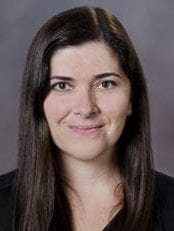
“Congenital Hydrocephalus: A Search for the Optimal Management”
Lissa Baird, MD
Dr. Lissa Baird is the Director of Neurosurgical Oncology in the Department of Neurosurgery at Boston Children’s Hospital. She presented imaging of posterior fossa tumors along with presenting signs and symptoms, including hydrocephalus. She also shared how to optimize resection of tumors and ways to possibly minimize morbidity through functional imaging, cortical mapping, and neuro-navigation. Dr. Baird discussed a variety of approaches and complications (such as posterior fossa syndrome) that may come along with recovery. By providing numerous illustrations and imaging, the audience was informed of the care that is needed for children with brain tumors who may develop secondary signs and symptoms of hydrocephalus.
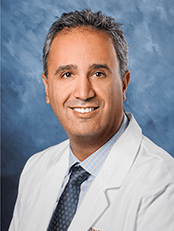
“Chiari Malformation & Syringohydromyelia: Perils and Pitfalls”
Moise Danielpour, MD
Dr. Moise Danielpour, the Vera and Paul Guerin Family Chair in Pediatric Neurosurgery at Cedars Sinai Medical Center (Los Angeles), presented a historical perspective on Chiari Malformation (CM) before introducing the four types of Chiari. He discussed in great depth the pathology, signs and symptoms, clinical manifestations, and radio-graphic analysis of CM. He also informed the audience of the treatments that are available, along with the results and prognosis of each. By supporting his presentation with visual images to support his findings, Dr. Danielpour was able to deepen the understanding of our participants with regards to Chiari Malformation.
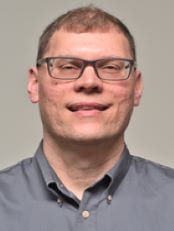
“Image Processing and Engineering Analysis to Identify Key Characteristics of Chiari I Malformation”
Francis Loth, PhD
Dr. Francis Loth, Executive Director of the Conquer Chiari Research Center at the University of Akron, presented a mechanical and biomedical engineering insight on the key characteristics of Chiari Malformation (CM) type 1. He informed us of morphometric differences in Chiari Malformation patients and their overall differences against their healthy counterparts. The participants also saw the changes following decompression surgery and learned about the impact of related conditions. Dr. Loth supported many of his findings with published journals and ongoing studies. He concludes that image processing and engineering analysis has identified several unique characteristics of CM, and his team believes that brain morphometrics combined with brain biomechanics might lead to a clinical tool.
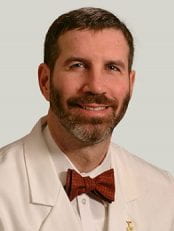
“The Burdens of Congenital CNS Anomalies: From Problems to Solutions”
David Frim, MD
In this presentation, Dr. David Frim, Chief of Neurosurgery and Program Director of the Margaret Hackett Family Program at the University of Chicago, addressed the complexities of living with a central nervous system (CNS) congenital anomaly and the various tools used to diagnose and treat specific congenital anomalies of the CNS. Congenital anomalies remain difficult to treat and research approaches to several common anomalies are discussed throughout his presentation. Dr. Frim discussed three relatively rare congenital anomalies that affect the CNS, and how their diagnosis may potentially contribute to physical as well as psychological burdens experienced by the patient. Although none of them currently have a cure, Dr. Frim concluded his presentation reaffirming that significant strides have been taken towards management and lessening the burdens associated with these congenital CNS anomalies.
Post-event Feedback
At the conclusion of this event, participants were given a post-event survey. The majority of participants rated the webinar as “Excellent” and rated the content as “Very Helpful” towards their clinical practice. Many participants found that the images in the presentations helped them learn the best, and participants enjoyed each presenters competency and eloquence.
